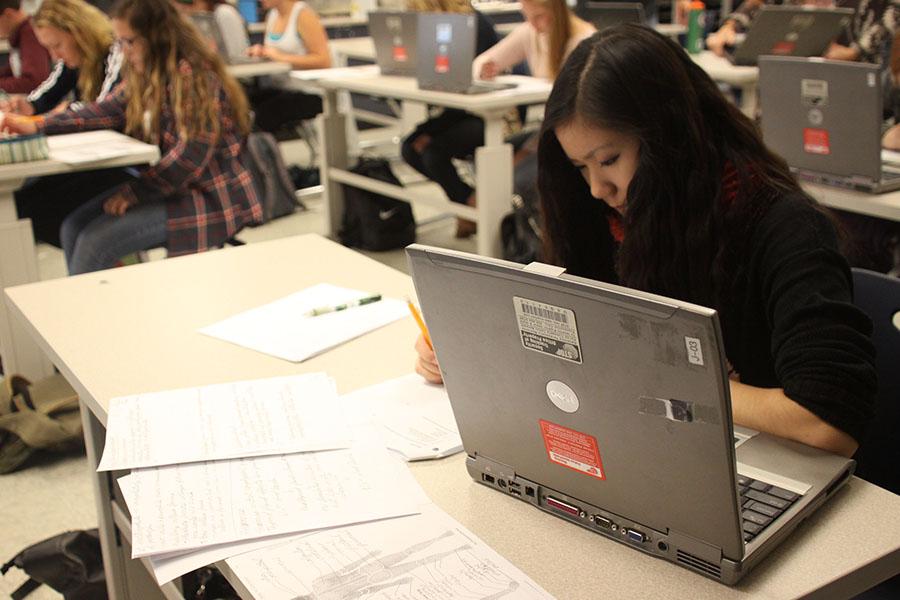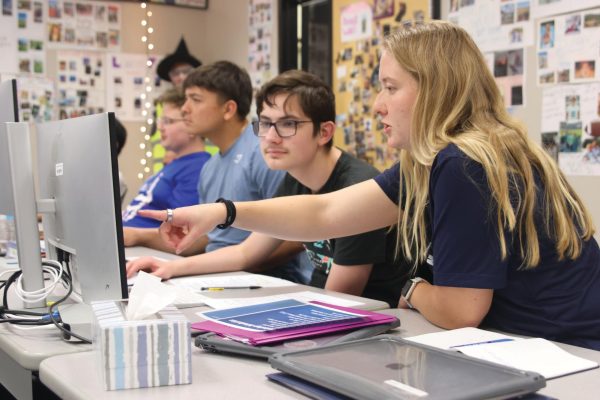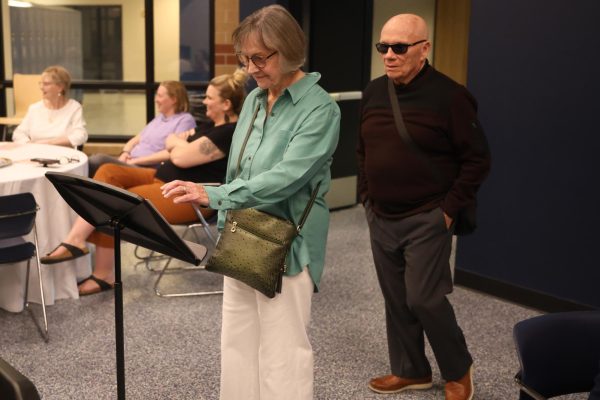District technology plan includes wireless upgrade
Plan allows students to use their own devices at school
Sophomore Karla Kim experiences difficulty finishing her Human Anatomy and Physiology test on Thursday, Oct. 31. “We didn’t get to finish the test because the computers were slow,” Kim said. “If they were better, we could probably get more work done.”
The district will soon begin installation of new technology that will improve the wireless system as well as allow students to bring their own technology to school.
The technology was purchased for just under $1 million after the July Board meeting. Implementation will begin after the Board finalizes the purchase.
“All of the received equipment is needed to update the infrastructure, so although parts will be utilized as needed in different locations around the buildings, this purchase will not directly put new … devices in our schools,” director of teaching and planning Dr. Jessica Dain said.
The district is also planning for the introduction of a new plan unofficially called Bring Your Own Device (BYOD), which would allow students to bring technology from home. Implementation for this will occur in a phased-in approach.
“By maintaining a healthy infrastructure, we will be able to consider various cost-effective and innovative operation options,” Dain said. “[BYOD] remains an increasingly popular option in school districts and has demonstrated an ability to reduce ongoing costs associated with purchasing new equipment in the coming years.”
Science teacher Eric Thomas supports BYOD.
“I think right now we’re kind of struggling to support technology, and kids have ample opportunity to use their own faster, more reliable devices, such as their own cell phones, laptops, etc.,” Thomas said. “I’m very thankful for the technology we do have. It’s just getting old.”
Junior Macy Walker does not like the current technology system.
“I think it sucks with the experience I’ve had with our technology,” Walker said. “Some computers are slow and not modern.”
Walker would like for students to be able to bring their own technology.
“I think it would be great because then we could all have our own computers and if we broke it, it would be our fault and we’d have to pay for it,” Walker said. “The district would have more money for other things.”
Thomas would like to have BYOD instead of new technology to avoid having problems with maintenance.
“We keep running into so many problems with the maintenance of the computers, and I don’t think it’s anybody’s fault; they’re just getting old and we’re having trouble keeping up with maintenance,” Thomas said. “I just think the reliability of being able to do something and have it work – that’s the biggest issue. You’re always against the clock.”
Thomas said he doesn’t worry about students abusing BYOD.
“Initially, when we came out with our current cell phone policy, I was against it because I thought kids were going to take advantage of it, but the current cell phone policy has made my life so much easier,” Thomas said. “You’d have to monitor, but you’d have to monitor anyways with the regular computers.”
Dain said the district would also provide technology for students who couldn’t provide their own equipment.
“It is the recommendation of the Technology Advisory Committee that we adopt a blended BYOD model in which staff and students can bring their own devices to school, but the district will also purchase some user devices to promote equality among all students and to meet the rigorous technology specifications for Common Core Assessments,” Dain said.
Thomas is not concerned with handling students who do not have sufficient technology to bring to school.
“[Having sufficient equipment is] more on [the students],” Thomas said. “When we talk about cell phones, the kids have sufficient equipment to do what we need to do. And in the event they don’t, there are always laptops available.”

Senior Ryan Fullerton is a third-year staff member and holds the position of editor-in-chief. Fullerton hopes to continue the success of the staff and publication from previous school years, as well as work for the continued improvement of JagWire and MVNews. Outside of newspaper, Fullerton is a fourth-year cross country runner.








